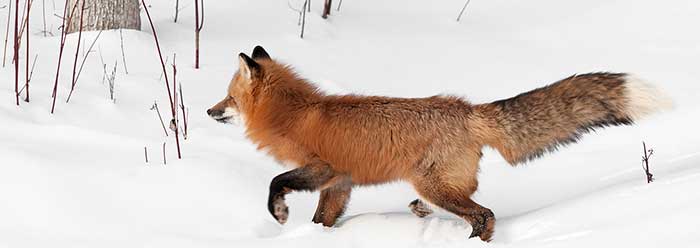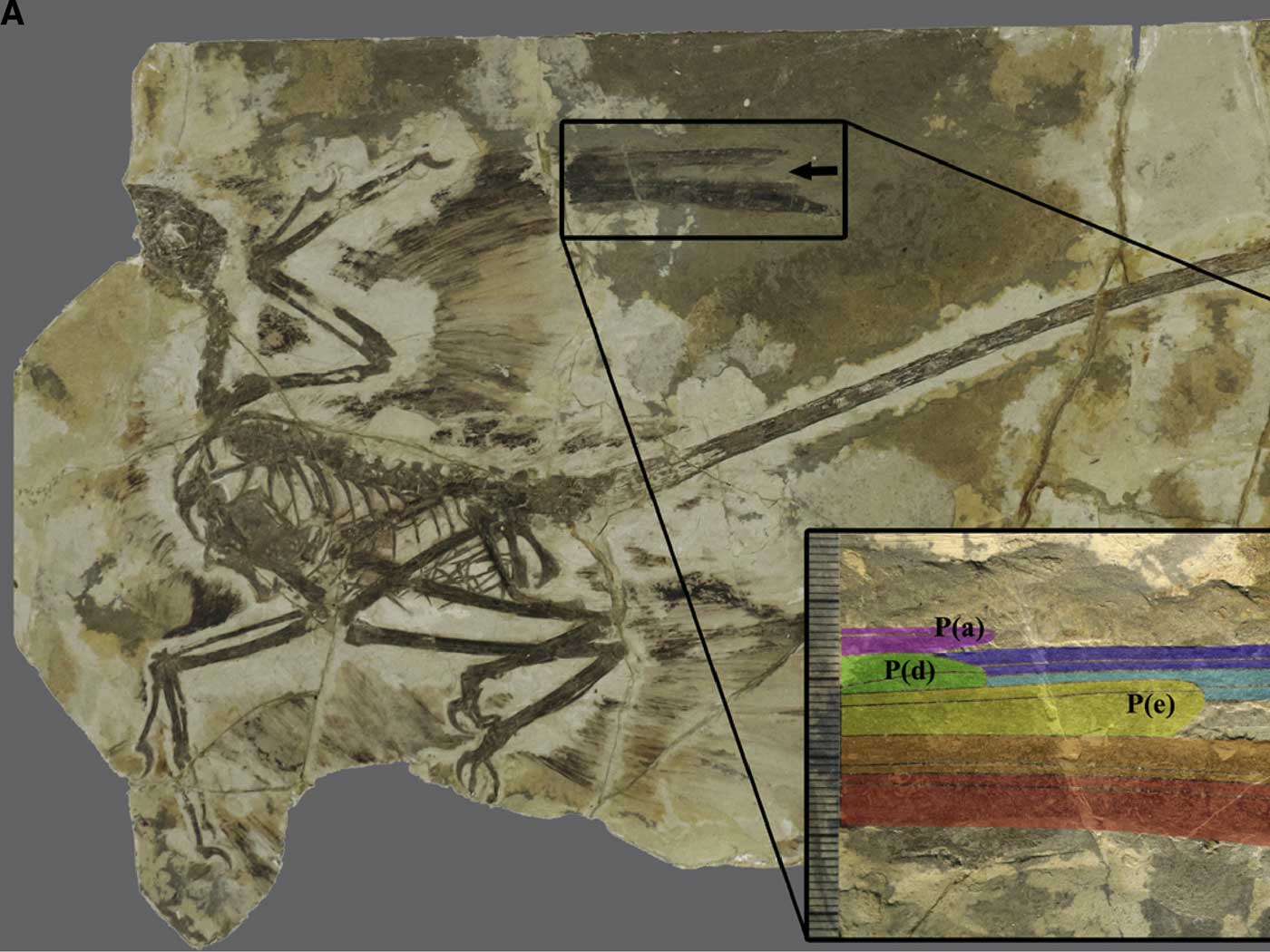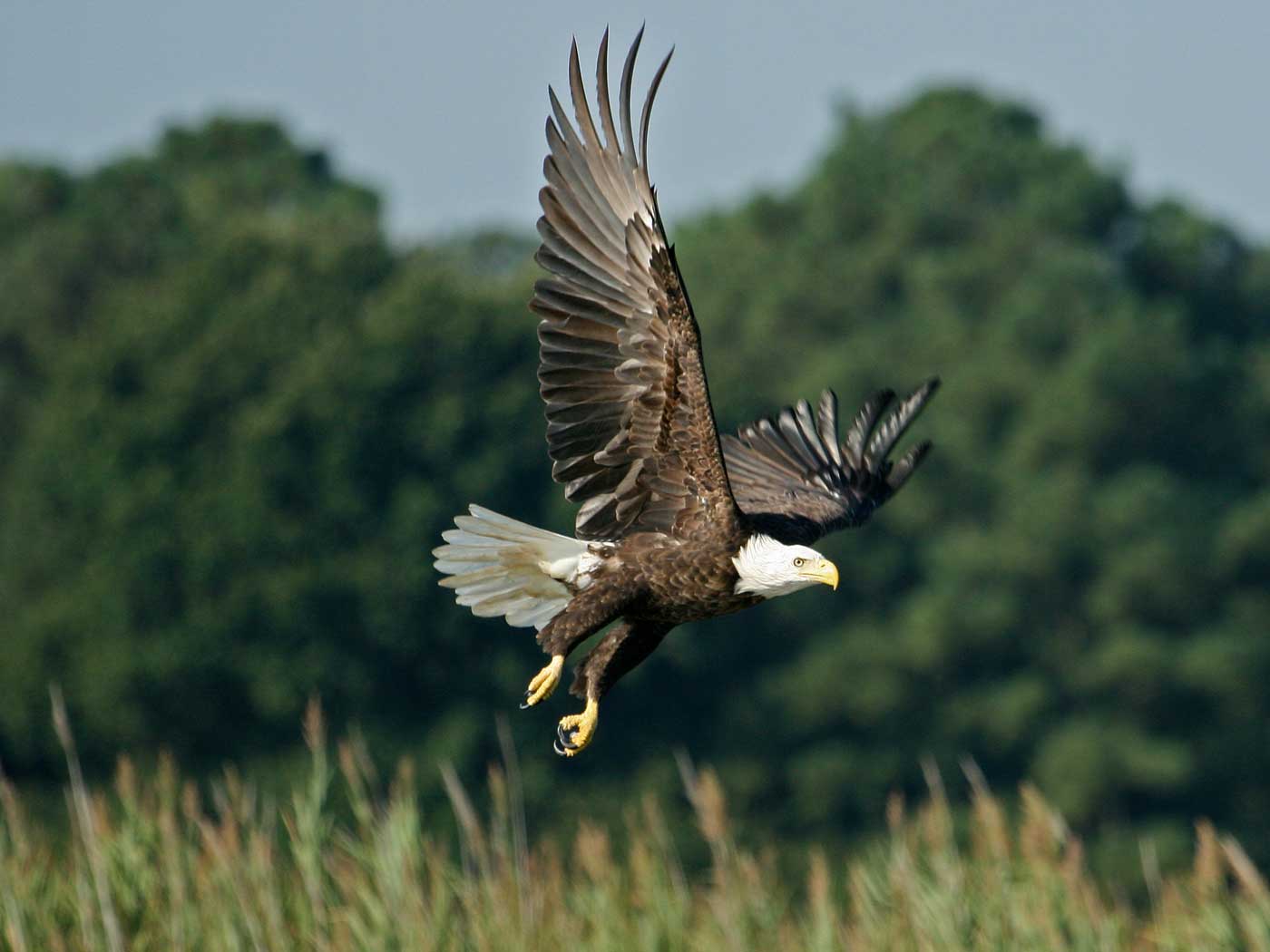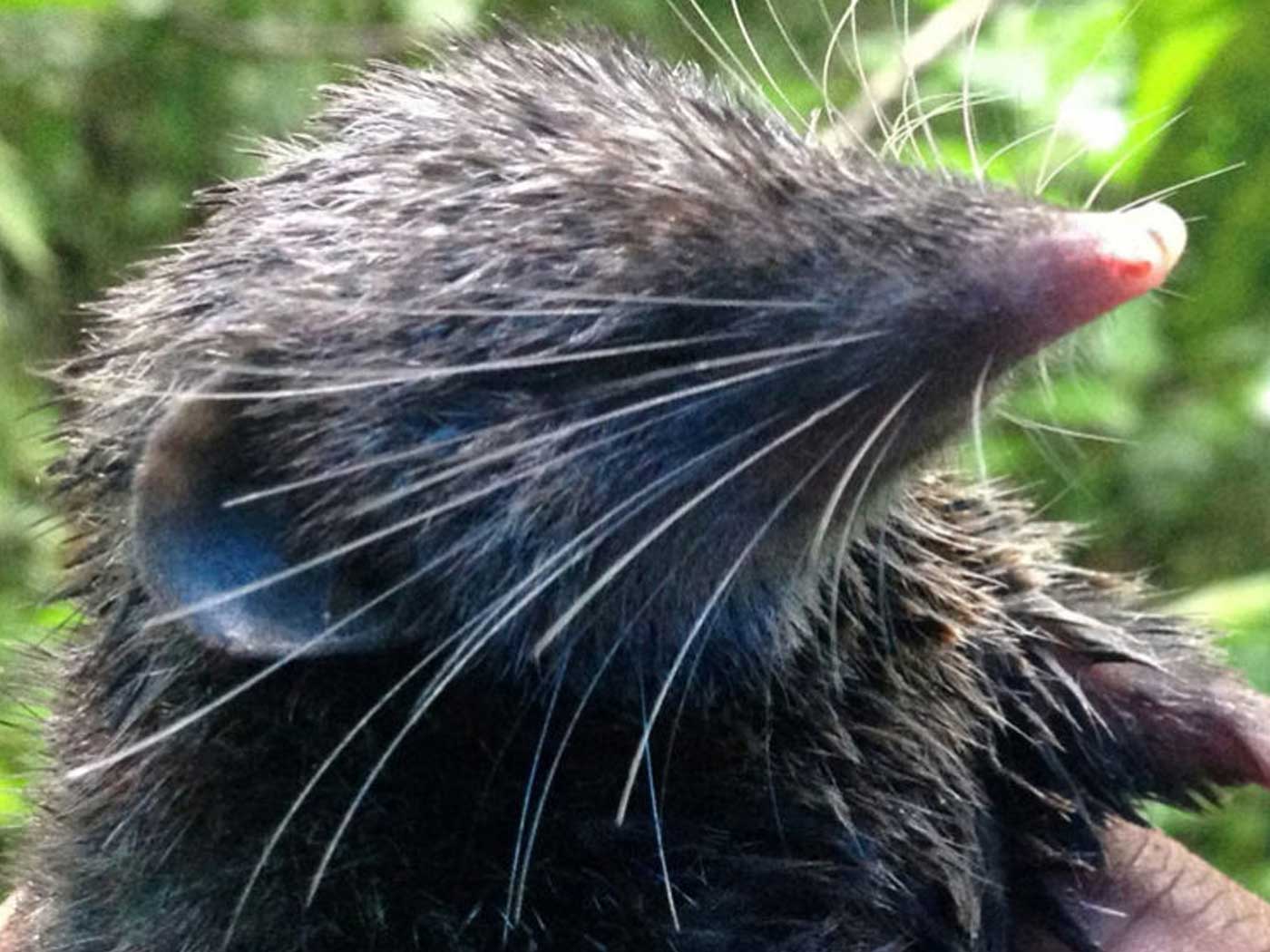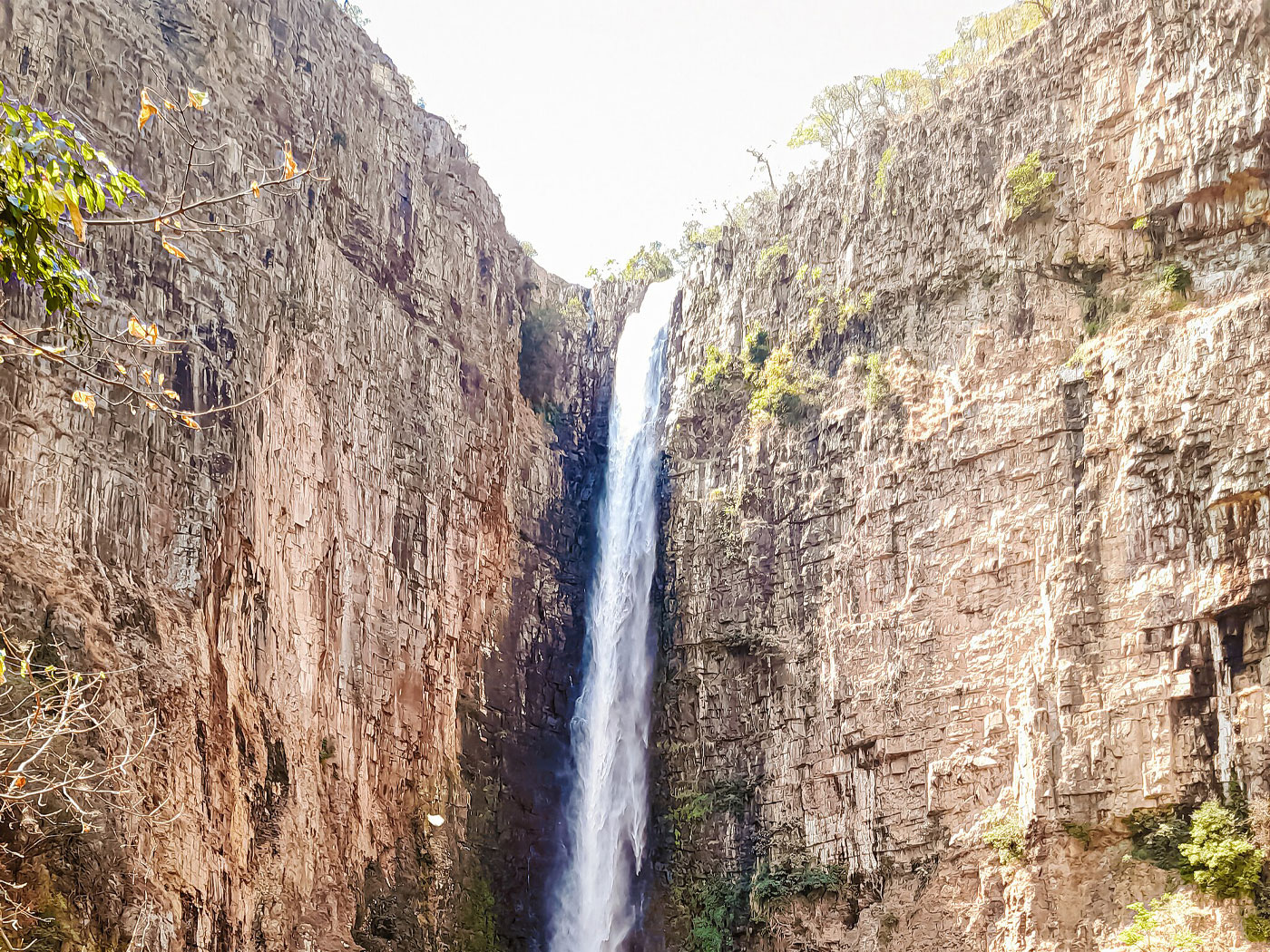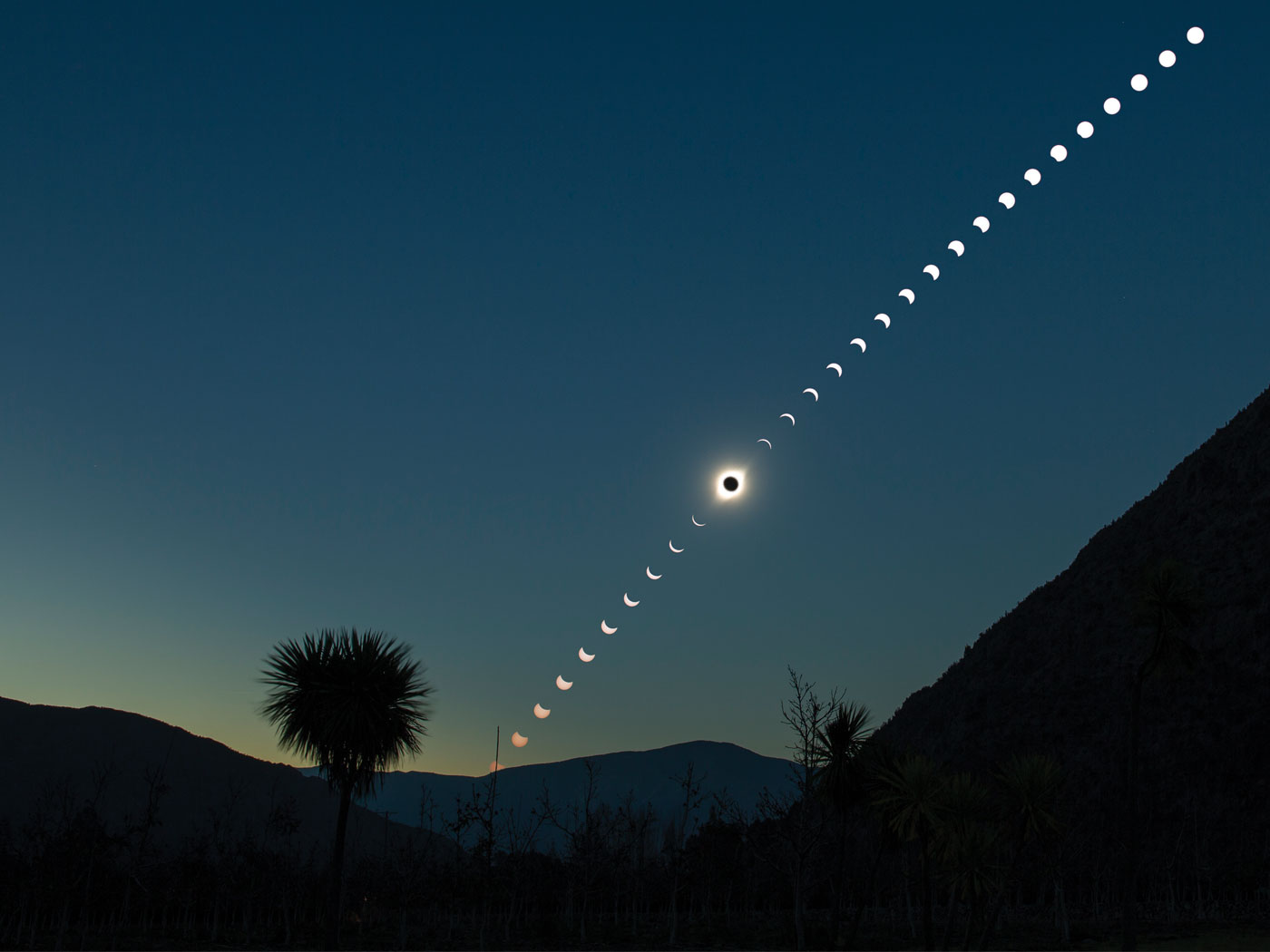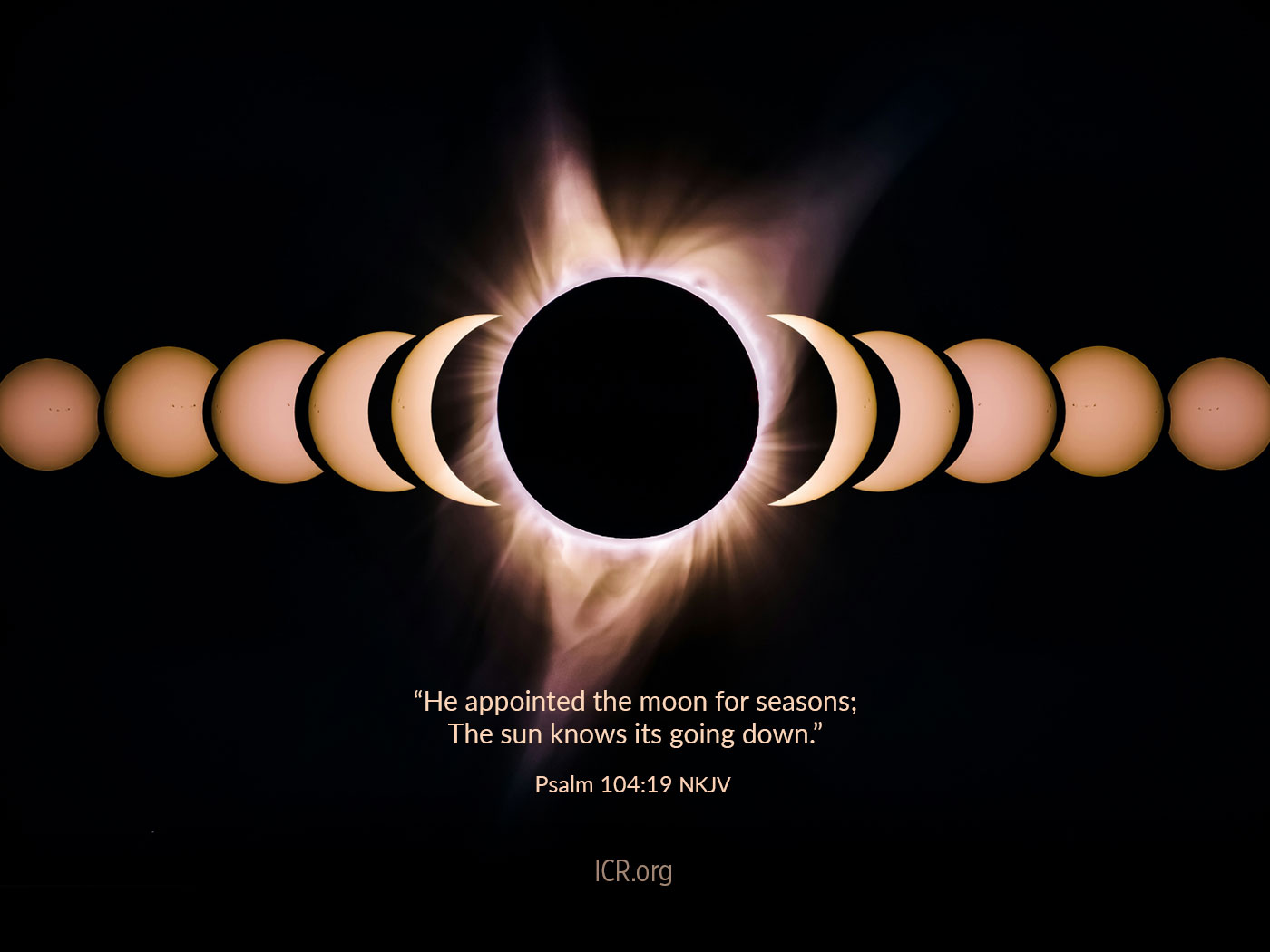During winter, red foxes hunt snow-covered mice without even seeing their prey—but how? Certainly, hearing plays a crucial role, but researchers from the Czech Republic and Germany found that European foxes pounce on mice much more successfully when facing north, leading them to suggest a more magnetic answer. Foxes may see more than what visible light reveals.
The red fox find its prey—often buried as deep as three feet beneath the snow—not only when it faces north, but also when it faces the earth’s magnetic south pole. The fox first pauses, tilting its head to gather minute sounds and sensations. It then takes a bounding leap and plunges, paws and nose first, straight down. It emerges with a mouse in its mouth an astounding 74 percent of the time when it attacks “about 20º clockwise of magnetic north,” according to a 2011 technical report in Biology Letters.1
A recent NPR blog discussed the fox’s winter hunting capabilities and included a link to a video clip of the fox in action.2
Attacks made when the foxes faced east or west returned a dismal 18 or fewer percent success rate, making a clear case for foxes’ geomagnetic sensory capabilities.
So far, nobody has discovered the specific organ, or combination of organs, responsible for the foxes’ acute sensory capability. The study authors suggested that it might be like the magnetite-based detectors that mole rats use to navigate underground. Or, it could be like some birds that have retinal cells tuned to detect electromagnetic current instead of light. If so, then the foxes might be able to triangulate the distance and direction to their prey by overlaying sensory data from sound, light, and electromagnetism.
The study authors described how this three-dimensional targeting system might work:
A fox moving in a fixed direction when approaching its prey (i.e. moving to the north), could approach until a specific component of the visual pattern generated by the magnetic compass is superimposed on the source of the sound from the prey, so that it could initiate an attack from a fixed distance.1
Where could a well-integrated and effective system such as this come from? The researchers wrote in Biology Letters, “Foxes may have evolved a different solution to this problem” of localizing prey without the advantage of sight.1 But no evidence supports the claim that foxes or environments or any combination of natural forces ever could invent a microscopic geomagnetic detector designed to solve hunting problems—or any other problems. Real solutions come from intelligent problem-solvers, so why would the foxes’ solution not also have been invented by specific intent?
References
- Cerveny, J. et al. 2011. Directional preference may enhance hunting accuracy in foraging foxes. Biology Letters. 7 (3): 355-357.
- Krulwich, R. ‘You’re Invisible, But I'll Eat You Anyway.’ Secrets Of Snow-Diving Foxes. NPR. Posted on npr.org January 3, 2014, accessed January 14, 2014.
* Mr. Thomas is Science Writer at the Institute for Creation Research.
Article posted on January 24, 2014.




